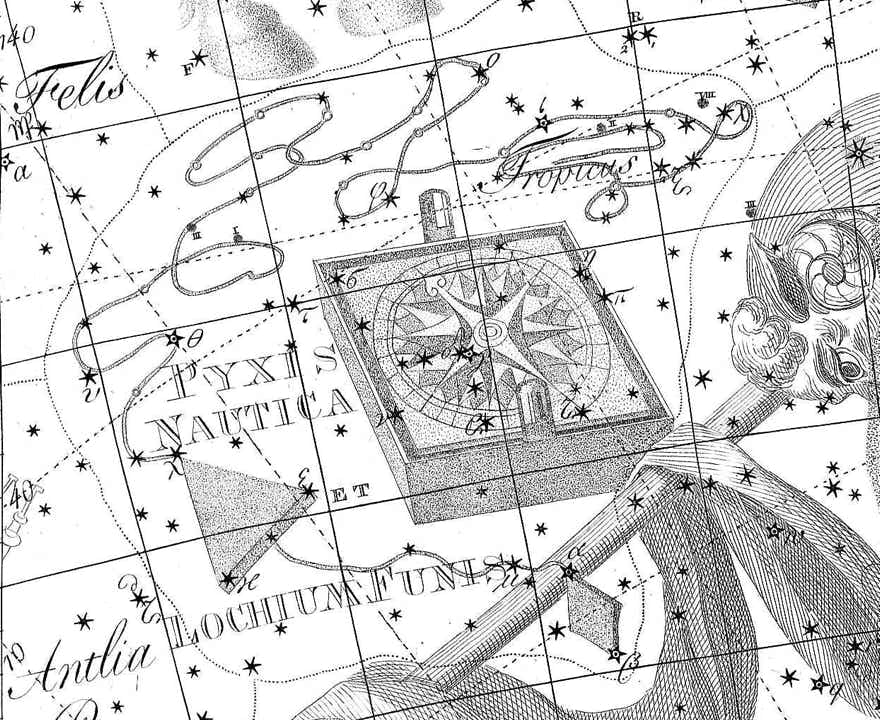
A constellation added to the southern sky by Johann Bode in his Uranographia atlas of 1801. Lochium Funis represented a nautical log and line used for measuring speed and distance travelled at sea. It was coiled around Pyxis, the compass, a previous invention by the Frenchman Nicolas Louis de Lacaille. The device consisted of a weighted piece of flat wood (the log), attached to a long rope with knots tied in it (the line); in operation, the sailors threw the log overboard and counted the number of knots that were paid out in half a minute, as timed by a sand glass.
Bode treated Pyxis and Lochium Funis as a combined figure; on his atlas he enclosed them both within the same constellation boundary and listed their stars together in his accompanying catalogue, Allgemeine Beschreibung und Nachweisung der Gestirne. As Bode put it, the log measured the speed of the ship while the compass gave the direction.
Lacaille’s Pyxis still exists but Bode’s Lochium Funis soon sank without trace.
Lochium Funis snakes around Pyxis, the compass, on Chart XVIII of the Uranographia of Johann Bode, who invented this now-abandoned constellation.
© Ian Ridpath. All rights reserved



